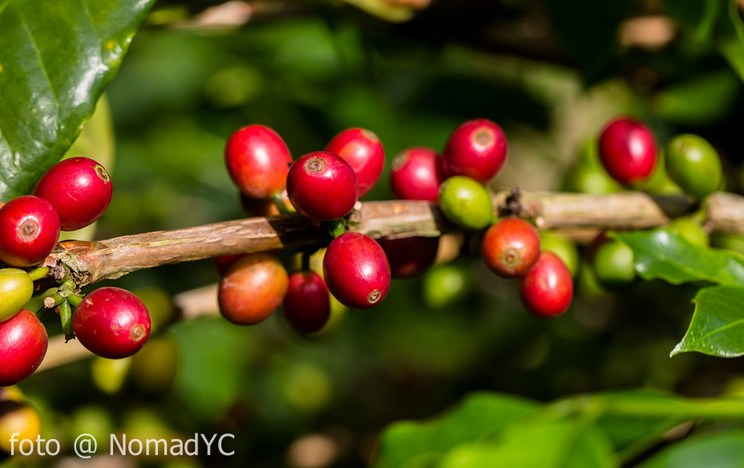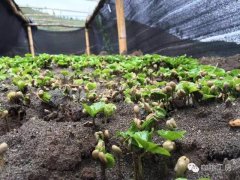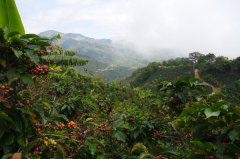History of Coffee cultivation in Taiwan how to develop Coffee planting Technology in Taiwan

Professional coffee knowledge exchange More coffee bean information Please pay attention to coffee workshop (Weixin Official Accounts cafe_style)
A coffee tree bears fruit several times a year Coffee trees are planted.
Coffee is the world's second largest internationally traded commodity, after oil. Coffee is a very important cash crop in many countries, and in Taiwan you may have heard of the name "Gukeng Coffee". I believe you must be very curious, when did Taiwan start growing coffee? What is the special flavor of coffee produced in Taiwan?
This time, let's talk about the history of coffee cultivation in Taiwan.
Dutch period
In the 16th-17th century AD, the Dutch sailed across the ocean to expand their colonies in Southeast Asia. Coffee was also brought to Batavia in Indonesia by Dutch merchants, who hoped to create considerable economic profits by planting it in large quantities in the colonies. It is reasonable to assume that coffee trees were introduced to Taiwan during the Dutch period from 1624 to 1662, but this is not documented, so it is uncertain whether the earliest coffee trees in Taiwan were introduced by the Dutch.
An Attempt in the Qing Dynasty
The earliest record of coffee cultivation in Taiwan is that Arabica coffee varieties were introduced from Manila by the British merchant "Tek Kee Foreign Company" in 1884, and were planted in Haishan District of New Taipei City and Wenshan District of Taipei City. However, after three years of planting, a fire destroyed the plant, and the transplanted coffee trees could not adapt to Taiwan's local climate and environment, so Tak Kee finally gave up planting coffee.
Large-scale cultivation during the Japanese occupation
The real large-scale cultivation of coffee in Taiwan began in the 1930s during the Japanese occupation period. The Japanese set up agricultural organizations in Hengchun, Chiayi and Shilin to actively introduce and cultivate coffee. Coffee gradually became an important special cash crop. Local brands such as Taitung Toyota Village Coffee were exported to Japan. In 1939, East Taiwan and Kimura Coffee Co., Ltd. were established. During the introduction of coffee to Taiwan, Li Chunsheng, a famous tea merchant in Dadaocheng, shipped roasted coffee to London in 1935, winning praise from British officials and greatly appreciating Emperor Taisho of Japan. At that time, it was roughly estimated that the area planted was hundreds of hectares.
Cultivation and International Trade after the Restoration of China
However, with the outbreak of the Pacific War, in order to meet the war food demand, most of the coffee farmland was converted to rice and other food crops, and Taiwan's coffee industry gradually declined. It was not until after retrocession that cultivation resumed in Pingtung and Taitung, and gradually in Nantou, Yunlin, Chiayi, Hualien and Tainan. In the 1950s, Brazil and Colombia had the largest production of coffee in the world, Indonesia was the most abundant in Southeast Asia, and Taiwan's coffee also occupied a place in Asia. The quality could be kept pace with Java and other places. The planting area of origin was at least 1000 hectares, and most of them were exported to other countries.
But the good times didn't last long. Brazil, Colombia and other Central and South American countries planted coffee on a large scale and mechanized way, and the price of coffee was greatly depressed. Taiwan's coffee industry declined again because of insufficient production and uncompetitive prices.
In 1982, Taiwan's agricultural annual report, there is no coffee planting information, since then, Taiwan's coffee industry has entered a lost 20 years, during this period, with the gradual decline of farmers with coffee planting experience, coffee planting technology slowly lost, from the Japanese occupation period began a long history of coffee cultivation, have to return to zero.
The Revival of Taiwanese Coffee
Amazingly, Taiwan coffee is reviving again because of the 921 earthquake.
After the 921 earthquake in 1999, the central Taiwan disaster area suffered large-scale debris flow damage, and soil conservation was urgently needed. After research, it was found that a large number of areca trees were planted as the culprit of debris flow, so areca trees were cut down on a large scale. However, in order to balance the livelihood of farmers, the government and some people in the private sector encouraged farmers in the affected areas to plant coffee trees, which have stronger soil and water conservation ability than areca trees and have economic value. As a result, many coffee plantations in Taiwan are currently planted with areca and coffee trees.
At present, the area of coffee cultivation in Taiwan is estimated to be about 1500 hectares. The more famous producing areas include Yunlin Gukeng and Taichung Dongshi. In 2003, Kookeng Coffee was heavily packaged for marketing. At that time, the people of Taiwan were very surprised, because few people knew that Taiwan could grow coffee. Coffee produced locally in Taiwan created a craze at that time, and was produced into instant packaging and sold in large quantities.
In terms of flavor, coffee from Gukeng, Yunlin and Dongshi, Taichung, after cup testing, has the most common aroma taste, flower fragrance, tea fragrance and moderate acidity, which is similar to the alpine coffee in Central America and South America. It is speculated that in addition to similar varieties, Gukeng and Dongshi are all higher altitudes, so they are classified as "mountain type" coffee.
At present, Taiwan coffee is still mainly sold domestically. One of the reasons is that production is insufficient, and the domestic market alone is already in short supply. Another reason is that Taiwan coffee has been out of the international market for too long. Although the flavor is attractive, it still takes some time to establish its reputation again. It is worth mentioning that Erna Knutsen, known as the godmother of fine coffee, once came to Taiwan to taste the crystal mineral coffee beans grown and roasted by "Mountain Crystal Coffee Manor" and praised them.
Coffee cultivation in Taiwan has a long history, which is probably beyond many people's imagine. From the era of the Great Navigation, coffee was first connected to Formosa through the Dutch, and then during the Japanese occupation, large quantities of coffee were planted, opening the door to the international export of Taiwanese coffee. After Taiwan's return to China, Taiwan's high-quality flavor once occupied a place in the international market, but in the end it could not withstand the price-cutting competition of Central and South America, and finally it could only fade out of the market.
After 20 years of loss, Taiwan's coffee industry has revived again, with excellent quality, once again appeared in front of the world. Although it takes a long time to establish a reputation, we believe that only if you are willing to work hard, Taiwanese coffee beans will eventually stand on the international stage again.
。
Important Notice :
前街咖啡 FrontStreet Coffee has moved to new addredd:
FrontStreet Coffee Address: 315,Donghua East Road,GuangZhou
Tel:020 38364473
- Prev

How do coffee trees grow? do you want to know if you can grow coffee trees at home? Daily Management of Coffee Tree
Professional coffee knowledge exchange more coffee bean information please follow the coffee workshop (Wechat official account cafe_style) A coffee tree bears fruit several times a year. The quality of planting ditch excavation affects the soil and water conservation of coffee garden, the implementation of agricultural technical measures, the growth and yield of coffee trees, which should be seriously implemented. Excavation method
- Next

The relationship between the growth altitude of Coffee planting and the Flavor of Coffee
Professional coffee knowledge exchange more coffee bean information please follow the coffee workshop (Wechat official account cafe_style) A coffee tree bears fruit several times a year. Raw beans are generally graded according to their size, defect rate, and altitude. The size and defect rate of raw beans are easy to understand, and many people do not quite understand why some producing areas are graded according to the altitude at which coffee beans grow.
Related
- Beginners will see the "Coffee pull flower" guide!
- What is the difference between ice blog purified milk and ordinary milk coffee?
- Why is the Philippines the largest producer of crops in Liberia?
- For coffee extraction, should the fine powder be retained?
- How does extracted espresso fill pressed powder? How much strength does it take to press the powder?
- How to make jasmine cold extract coffee? Is the jasmine + latte good?
- Will this little toy really make the coffee taste better? How does Lily Drip affect coffee extraction?
- Will the action of slapping the filter cup also affect coffee extraction?
- What's the difference between powder-to-water ratio and powder-to-liquid ratio?
- What is the Ethiopian local species? What does it have to do with Heirloom native species?

